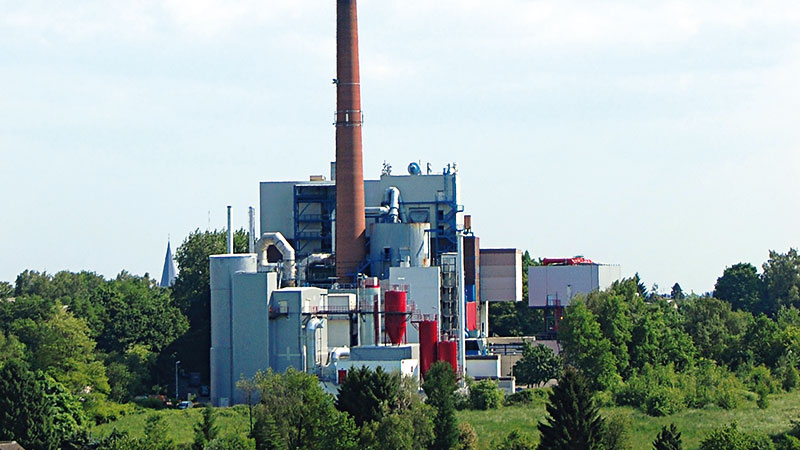However, we would also like to point out certain specificities that have to be considered when discussing the waste sector’s contribution to these goals.
The incineration of municipal and hazardous waste is exempted from the current EU Emission Trading System (ETS), for good reasons, CEWEP stated in the context of the roadmap for the revision of the EU ETS. Waste-to-Energy (WtE) plants are part of an integrated waste management system whereas ETS is a market mechanism. It should not be applied to the waste sector, which aims to reduce as much as possible the impact of waste to the environment. Applying measures such as the EU ETS exclusively to WtE (and not to the entire waste sector) would be counter-productive, as the market would encourage diversion of some waste streams to cheaper, less environmentally sound routes.
“WtE incineration, like all the other industries, must and does contribute to the greenhouse gas mitigation. However, extending the EU ETS to waste incineration would not provide an actual decrease in GHG emissions from WtE plants. It would be applied too far from the source of CO2 – plastic products and packaging that reach us as unrecyclable waste, and therefore it would not have the desired steering effect.”, said CEWEP’s President Paul De Bruycker.
Differently from other industries, WtE operators do not have a choice on the characteristics or carbon footprint of the input to their plants – waste that cannot be recycled. Adding supplementary carbon-related costs to the taxes already imposed on WtE in numerous EU member states would make waste treatment more expensive for municipalities and therefore citizens. While at the same time this measure would not bring about any additional GHG steering effect. It would also increase the price of recycling as WtE plants treat the residues from sorting and recycling plants.
Making WtE more expensive could be even counterproductive for the climate considering that numerous EU member states still heavily rely on (cheaper) landfills and might be inclined to continue putting their waste on landfills despite their heavy climate impact.
For the non-recyclable plastic waste (the source of the fossil CO2) treated in European WtE plants the only alternatives to WtE are landfilling, export to other countries, often with lower environmental and social standards than in Europe or treatment in industrial plants that do not have to fulfill the same environmental requirements. On the other hand, in WtE plants the pollutants embedded in this waste are safely and permanently destroyed. The important hygienic task that WtE fulfils for society was also demonstrated during the COVID-19 pandemic when contagious waste from hospitals, medical facilities and households were safely treated with high temperatures in waste incineration plants across Europe.
European WtE plants offset the GHG emissions through landfill diversion, replacement of fossil fuels in energy production and material recovery from bottom ash. Additionally, they are exploring carbon capture and use/storage technologies where appropriate.










Concerning the industry’s claim that including municipal incinerators in EU ETS will lead to an increase in landfilling then in our experience, such claims are overstated.
Emissions from waste incineration are already included in the EU Emissions Trading System (ETS) Directive, except for municipal and hazardous waste. When a Member State classifies an installation as a co-incinerator, it is also covered by the EU ETS. Member States may choose to opt-in emissions from additional activities not covered by the EU ETS Directive. For example, Denmark and Sweden have already included their municipal incinerators in the scope.
Moreover, there are many benefits of including incinerators in the scope. Firstly, the inclusion will help to correct the unfair competition with other energy producers especially those using renewable sources such as wind and solar renewable energy that have to compete with energy produced by municipal incinerators. Since burning waste results in much higher CO2 emissions (509 gCO2/kWh) than burning fossil fuel, continued use of incineration is simply delaying a much needed, and urgent, transition to less carbon-intensive power generation infrastructure.
Secondly, a higher gate fee (thanks to ETS costs) would also encourage better waste management such as improving sorting and recovery of materials from the residual waste, and incentivise waste providers to decrease the share of the fossil content in waste input, especially if the higher costs could be allocated towards them. This can eventually contribute to a lower impact of burning, which is and must be kept as, the strategic priority. Some operators (e.g. ROAF plant on the outskirts of Oslo) and are have started doing front-end removal of plastics and other materials for recycling purposes. Some countries have gone even further by setting targets to reduce the overall amount of waste incinerated i.e. Denmark and several regions of Belgium.
Finally, higher costs of incineration would also create an enabling policy framework for non-combustion alternatives such as Material Recovery and Biological Treatment (MRBT) facilities. There is an increasing need for plastic waste streams, to meet for example, the recycled content requirements. MRBT facilities are climate-friendly since they recover fossil-based materials, whilst stabilising the organics. This is of particular importance, given the ongoing decarbonisation of the EU economy and energy production, which implies the need to reduce GHG emissions progressively and steadily to achieve net-zero by 2050.